Yi Kaiyu, Han Xibin
Distance Education In China.
2025, 45(4):
85-98.
Artificial Intelligence Generative Content (AIGC) has swiftly brought the relationship between humans and technology from “human-machine collaboration” to a new stage of “human-AIGC collaboration”. The instrumental and passive response characteristics of technology are gradually diminishing, while its intelligence and subjectivity are increasing, altering the modes of human-technology interaction. This transformation has also restructured the current seven-element blended teaching system into an eight-element human-AIGC collaborative teaching system, incorporating intelligent agents. AIGC is not only an independent element within this system but also influences the relationships between the elements: it forms four stable yet heterogeneous types of “teacher-student-AIGC” triadic structures, making the roles and functions of the three agents more diverse and dynamic. The cultivation goals, due to the job revolution brought about by AIGC, should become more embodying the concept of outcome-based education (OBE), shifting the educational philosophy from “teaching knowledge” to “teaching students how to collaborate with AIGC to maximize learning benefits”. Teaching objectives will focus more on developing the “composite brain” that promotes human-AIGC collaboration capabilities, fostering high-order capabilities that integrate individual internal brain with AIGC external brain, such as language, critical thinking, innovative thinking, problem-posing, problem-solving, logical reasoning and so on. Teaching content and resources, empowered by AIGC, will dynamically generate, expand, create, and customize based on teaching standards, content, teacher and student indivi-duality, and teaching needs, exhibiting richness, appropriateness, and novelty. In teaching activities, AIGC will simultaneously exhibit its instrumental and agent nature, and construct a teaching activity selection framework integrated with AIGC based on knowledge classification theory. The teaching environment will become more multimodal, personalized, and ubiquitous, yet this personalization and ubiquity cannot rely solely on AI for decision-making. Human teachers must recognize differences between students from the perspective of affordance theory and teach according to individual aptitudes. In terms of teaching evaluation, the granularity of evaluation will become more refined, with significant improvements in precision and depth, enabling more immediate, customized, and accompanying feedback for each learner.


